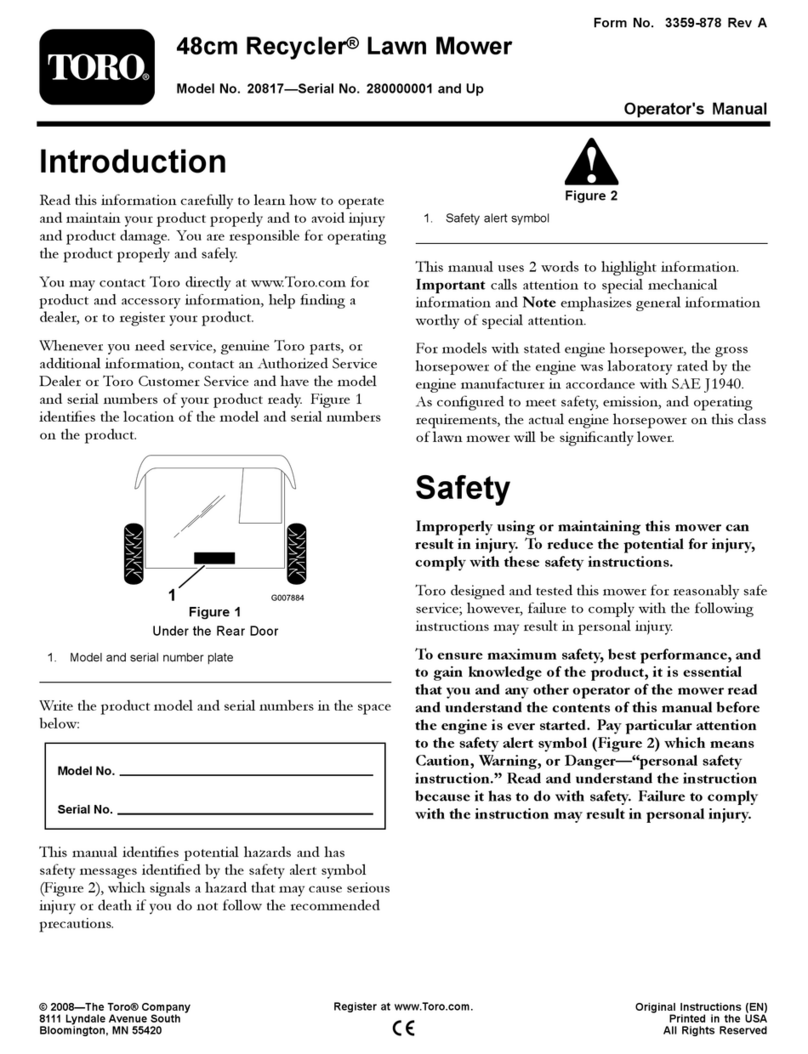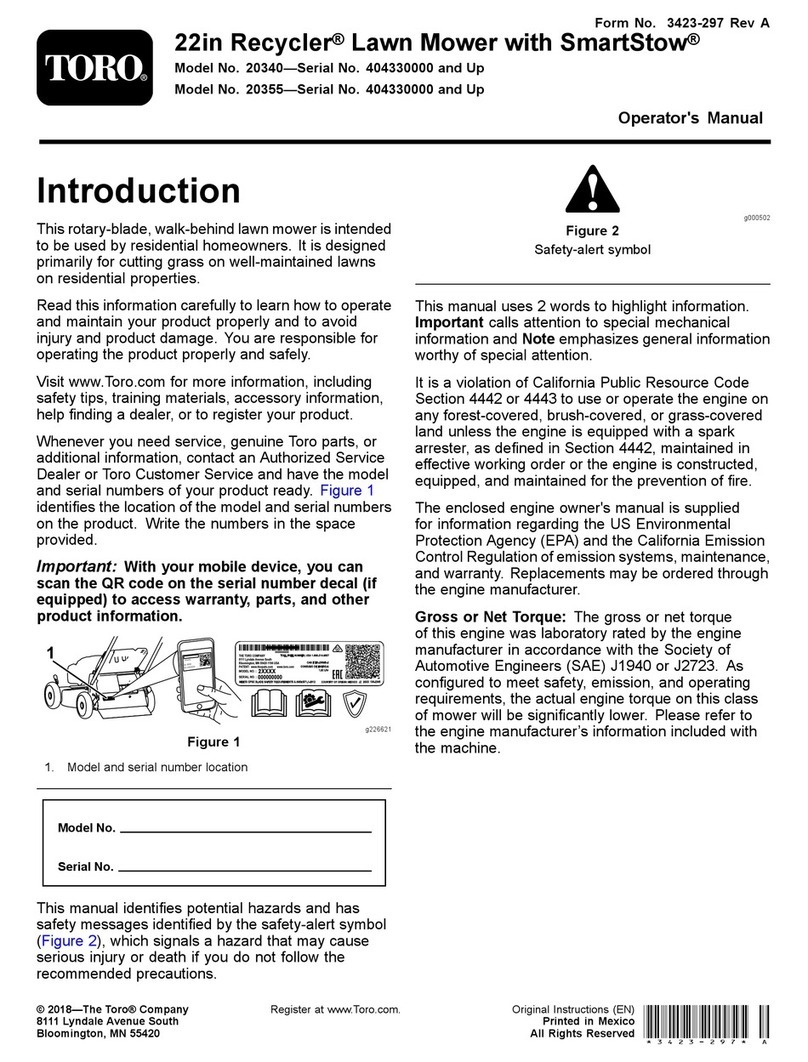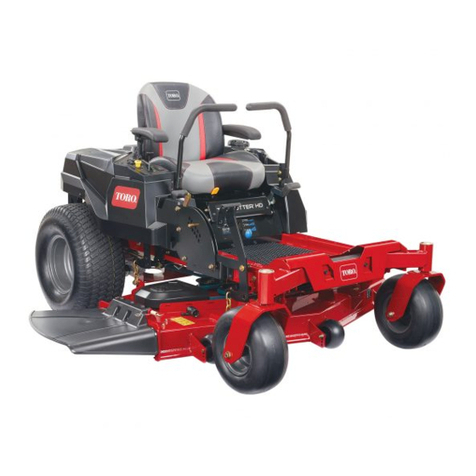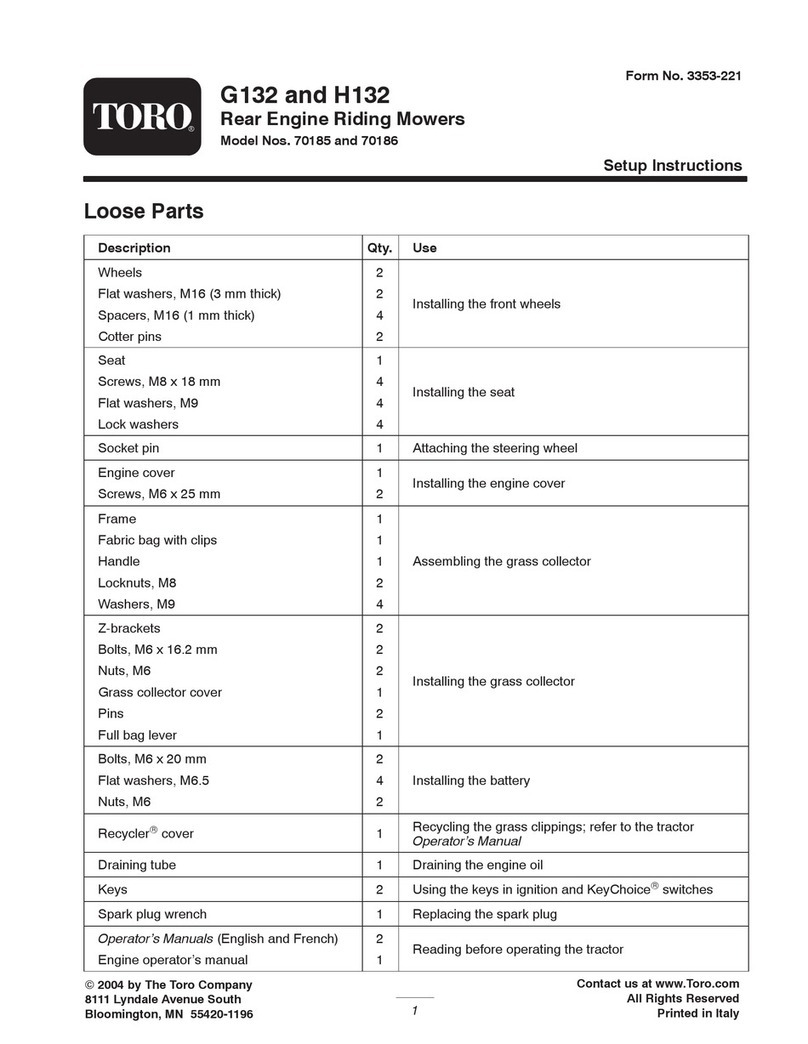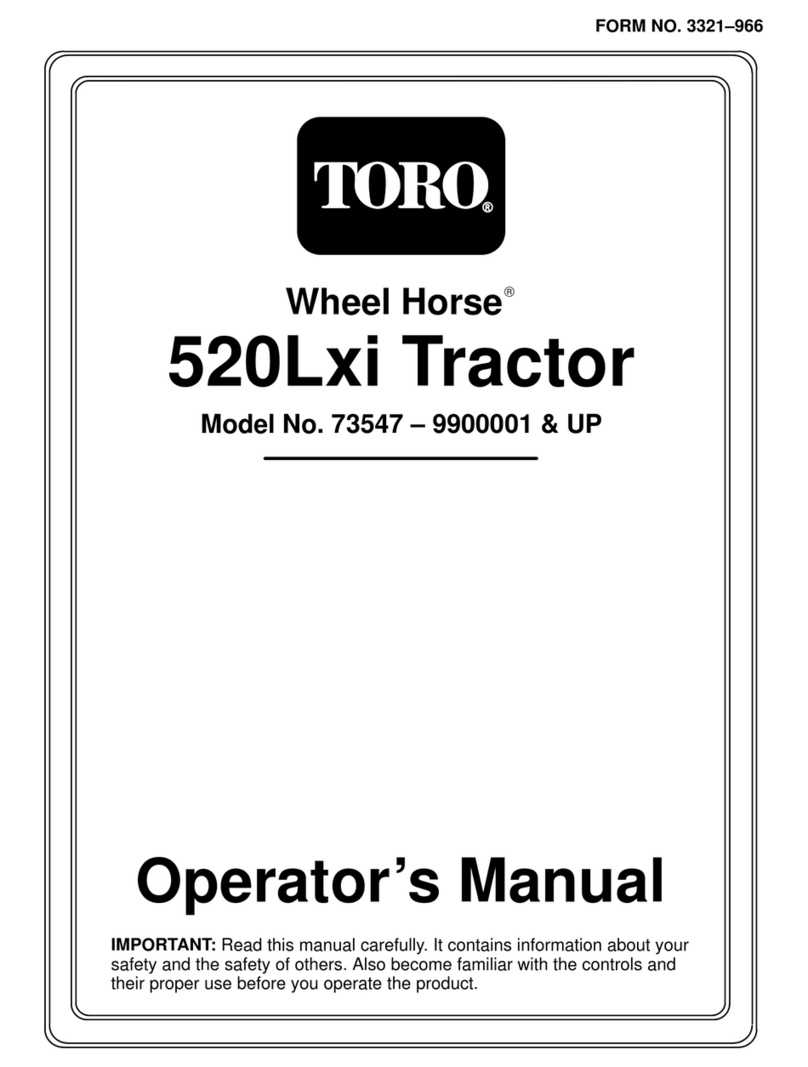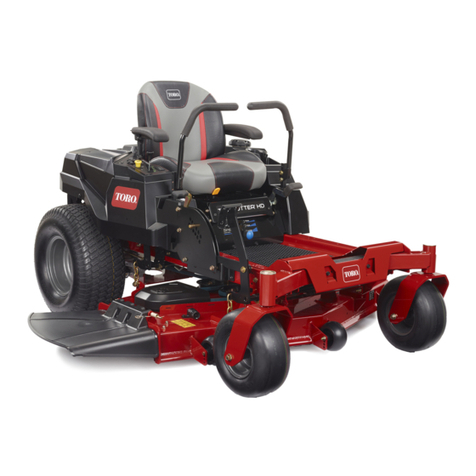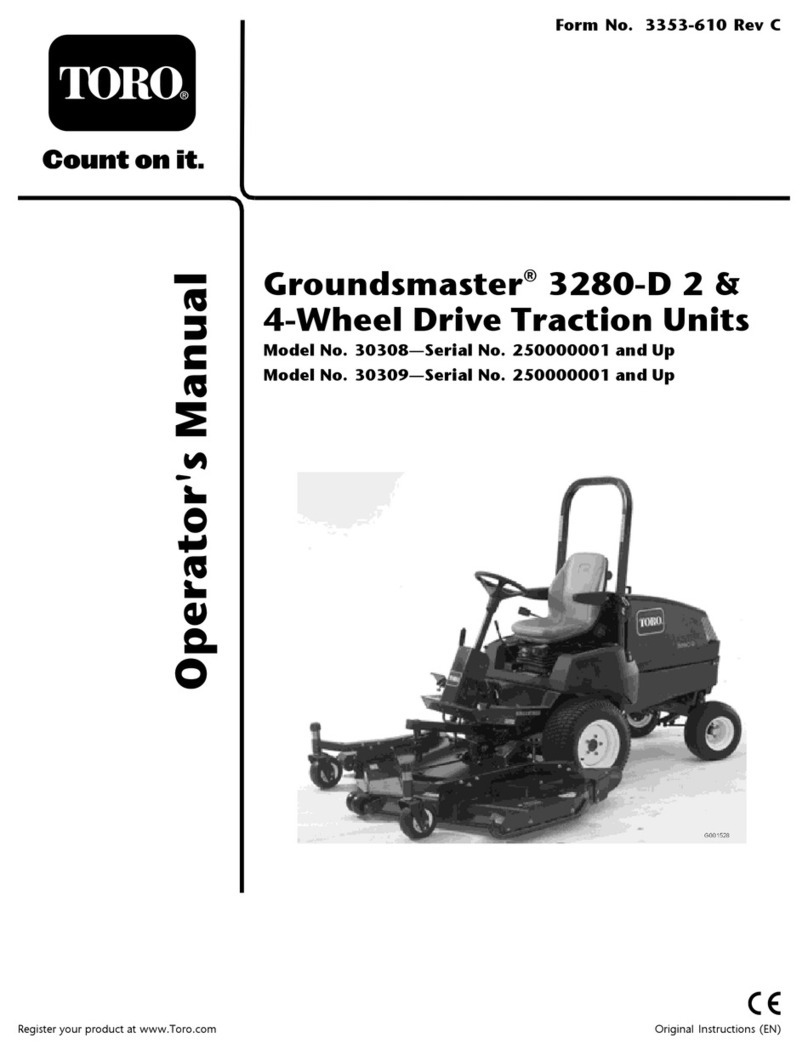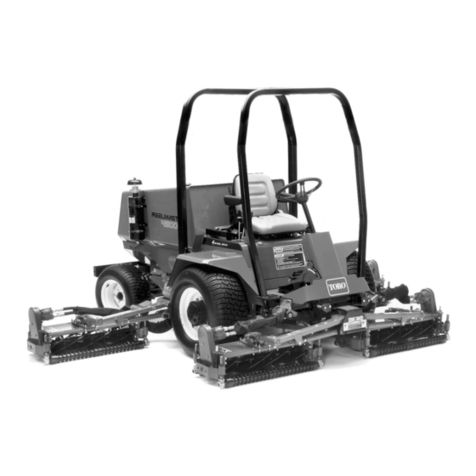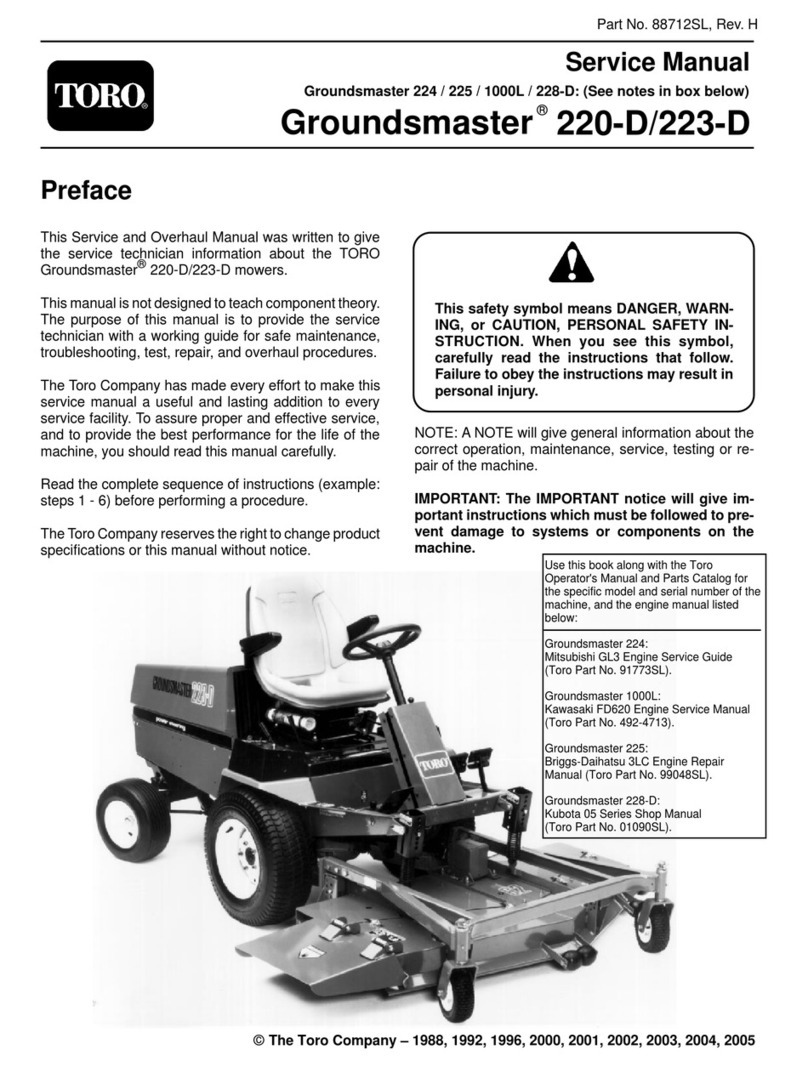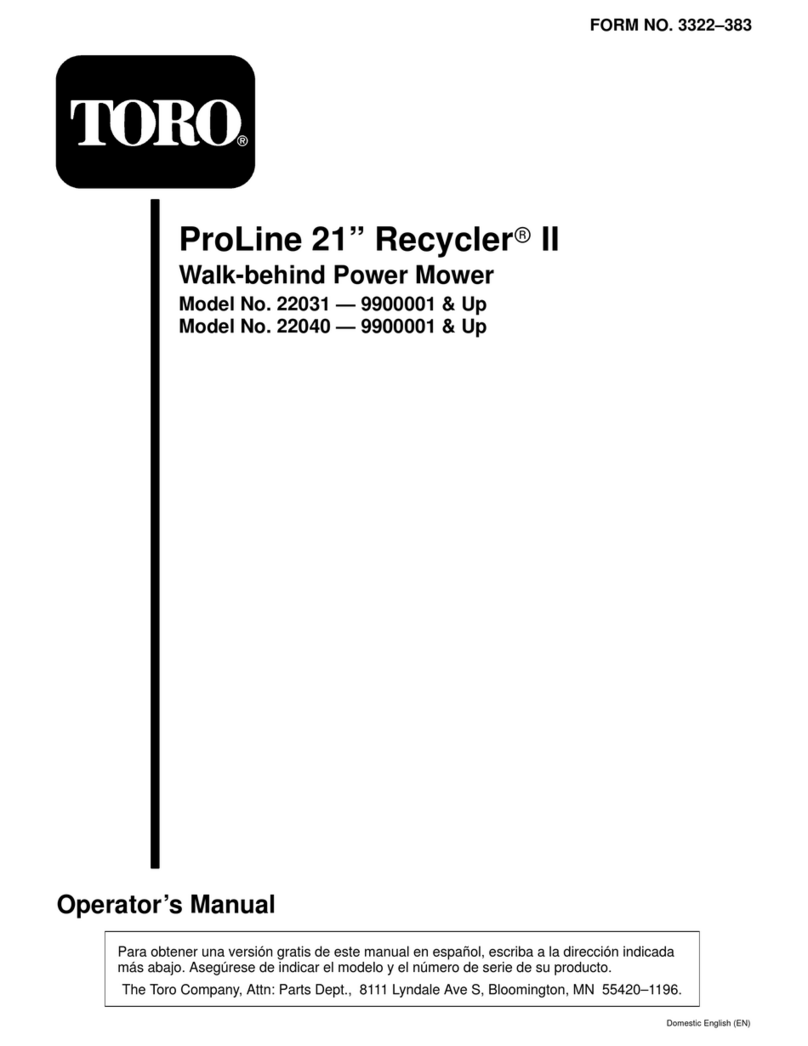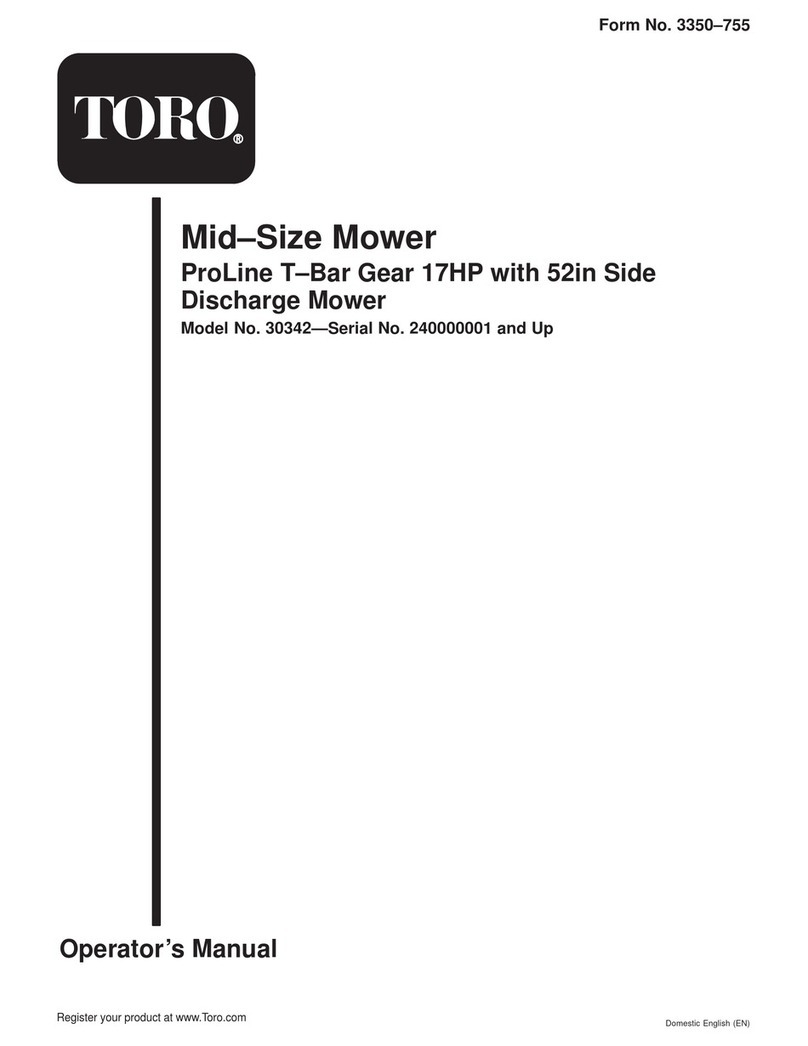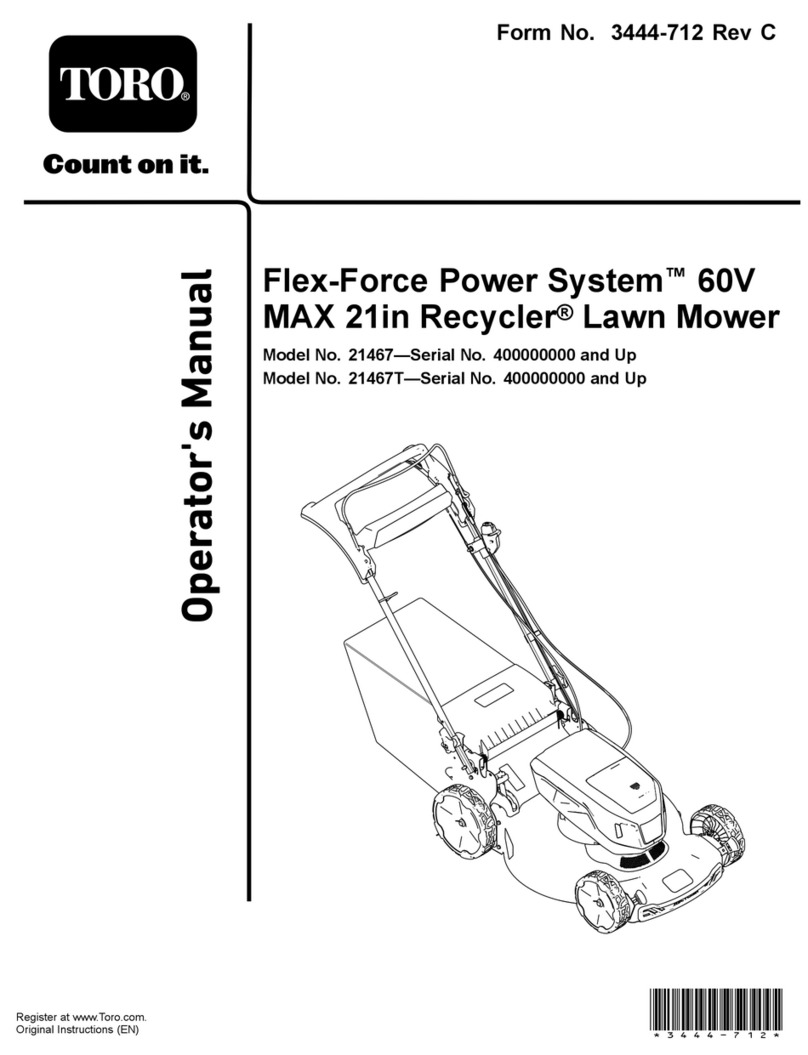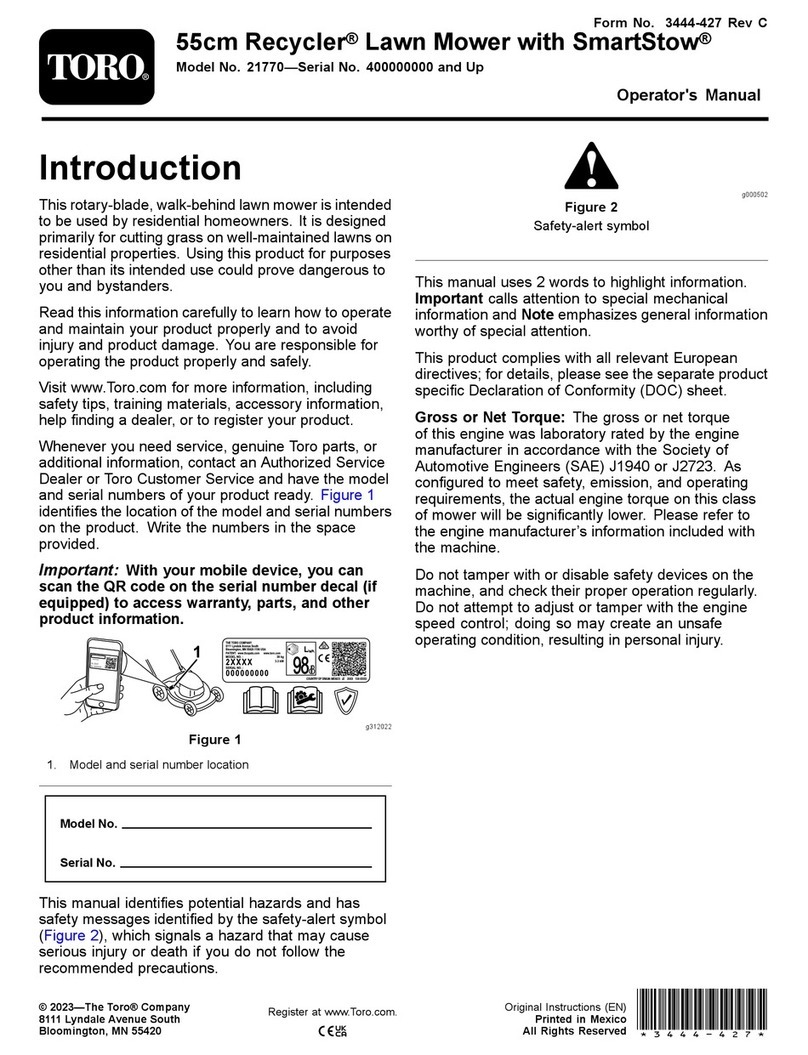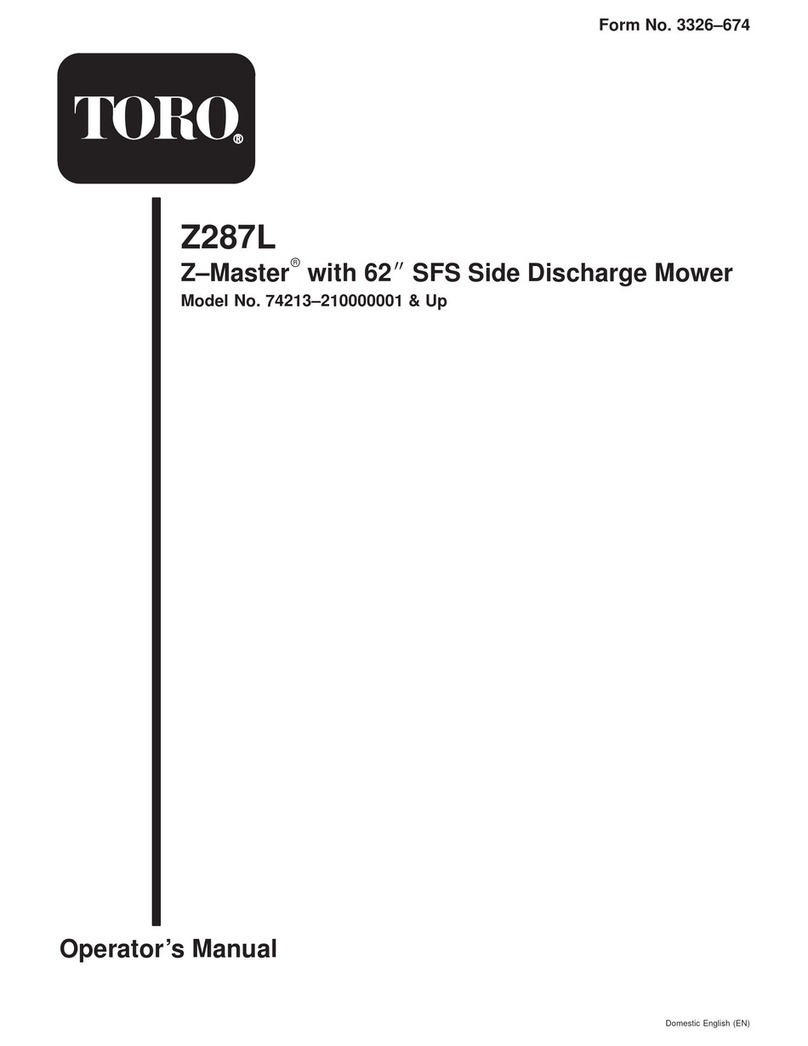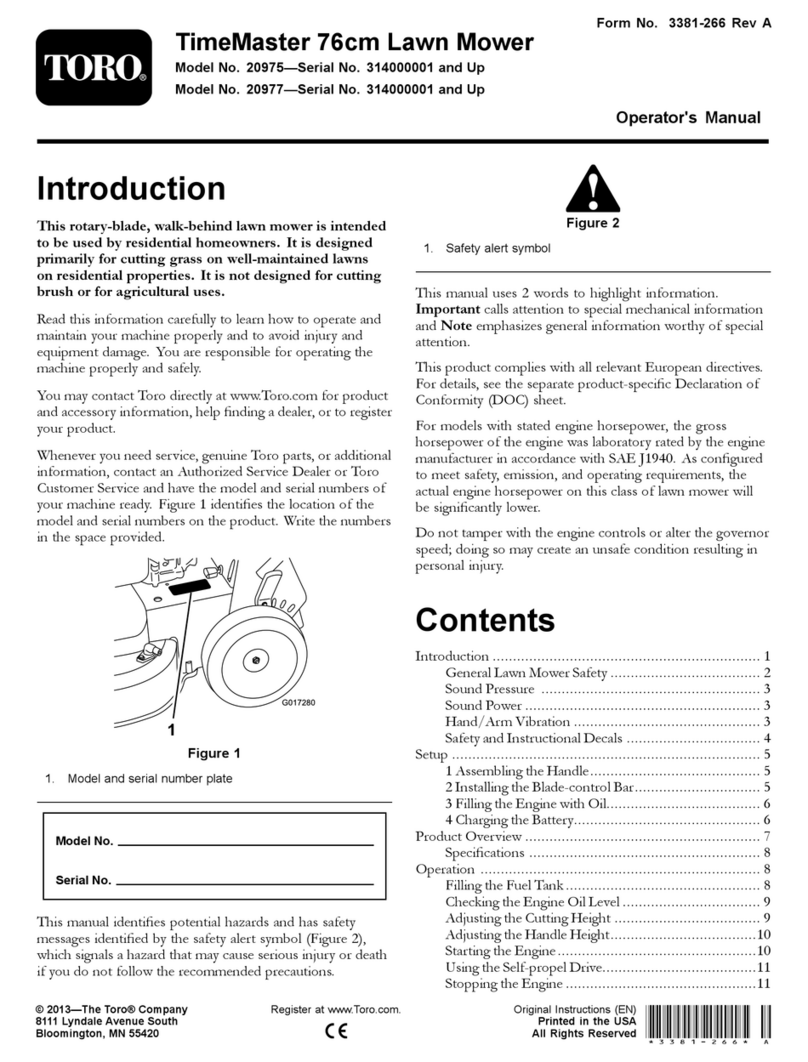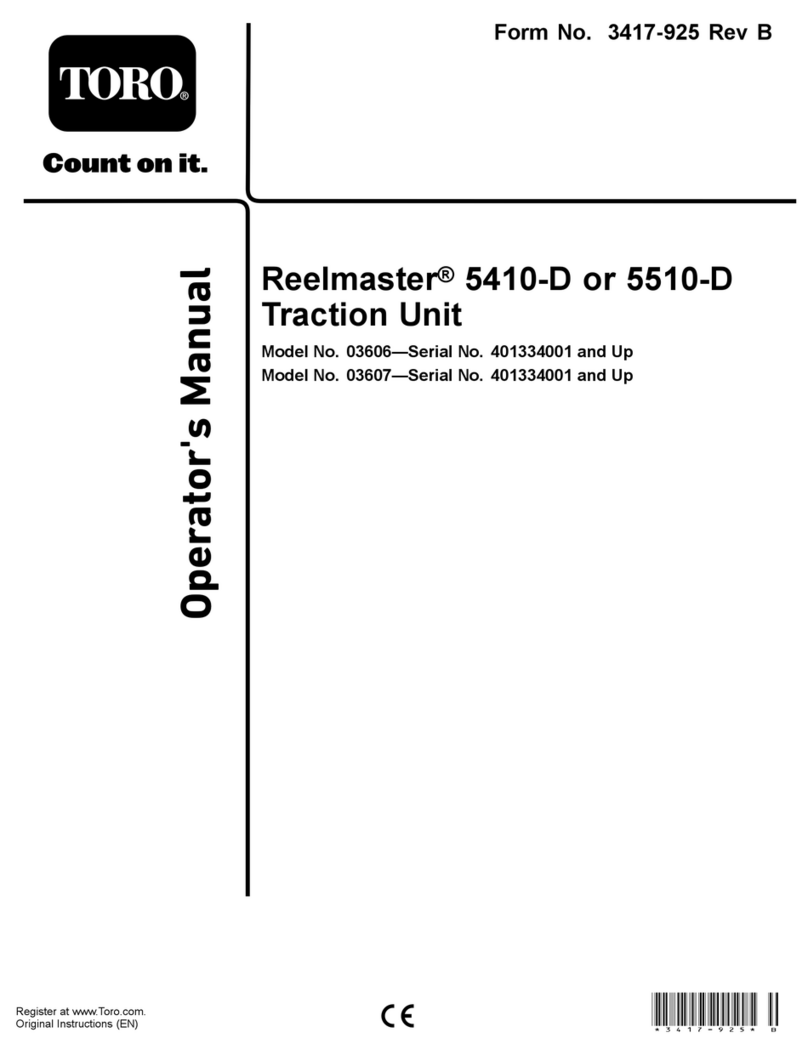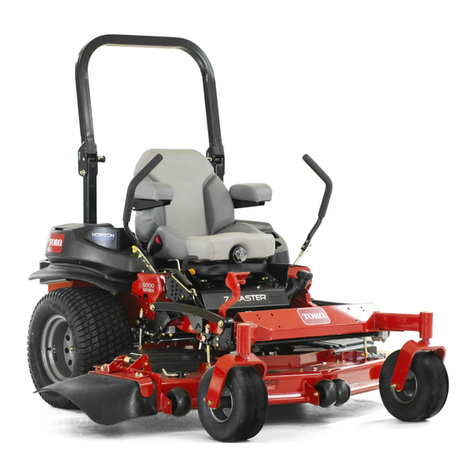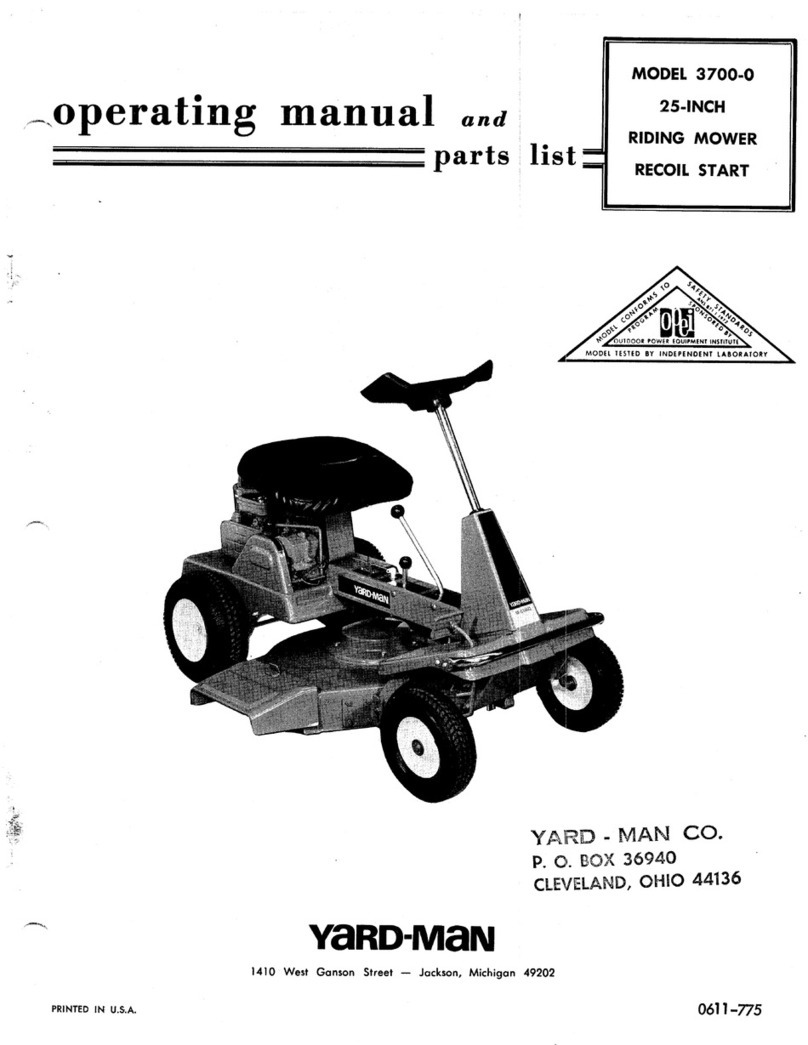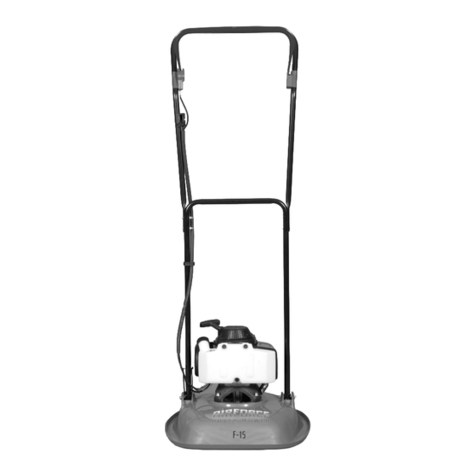The Groundsmaster 3500-D was tested and certified
by TORO for compliance with the B71.4-1999
specifications of the American National Standards
Institute. Although hazard control and accident
prevention partially are dependent upon the design
and configuration of the machine, these factors are
also dependent upon the awareness, concern, and
proper training of the personnel involved in the
operation, transport, maintenance, and storage of
the machine. Improper use or maintenance by the
operator or owner of the machine can result in
injury. To reduce the potential for any injury,
comply with the following safety instructions.
Supervisor’s Responsibilities
1. Make sure operators are thoroughly trained and
familiar with the operator’s manual and all the
labels on the machine.
2. Be sure to establish your own special
procedures and work rules for unusual
operating conditions (e.g., slopes too steep for
machine operation. Survey the complete
mowing site to determine the hills on which the
machine can be safely operated. When
performing this site survey, always use
common sense and take into consideration the
turf condition and the rollover risk.
To determine which hills or slopes on which the
machine may be safely operated, use the
inclinometer provided with each machine. To
perform a site survey, lay a 1.25 meter board on
the slope surface and measure the angle of the
slope. The board will average the slope but will
not take into consideration dips or holes. THE
MAXIMUM SIDE HILL ANGLE SHOULD
NOT BE GREATER THAN 25 DEGREES.
Before Operating
3. Operate the machine only after reading and
understanding the contents of this manual and
viewing the operator’s training video supplied
with the machine. A free replacement manual is
available by sending complete model and serial
number to:
The Toro Company
8111 Lyndale Ave. S.
Bloomington, MN 55420-1196.
4. Only trained operators, skilled in slope
operation and who have read this manual and
viewed the operator’s training video should
operate the machine. Never allow children to
operate the machine or adults to operate it
without proper instructions.
5. Become familiar with the controls and know
how to stop the machine and engine quickly.
6. Do not carry passengers on the machine. Keep
everyone, especially children and pets, away
from the areas of operation.
7. Keep all shields, safety devices and decals in
place. If a shield, safety device or decal is
damaged, malfunctioning or illegible, repair or
replace it before operating the machine.
8. Always wear substantial shoes. Do not operate
machine while wearing sandals, tennis shoes or
sneakers. Do not wear loose fitting clothing
because it could get caught in moving parts and
possibly cause personal injury.
9. Wearing safety glasses, safety shoes, long pants
and a helmet is advisable and required by some
local ordinances and insurance regulations.
10. Make sure the work area is clear of objects
which might be picked up and thrown by the
blades.
11. Fill fuel tank with diesel fuel before starting
engine. Avoid spilling any fuel. Since fuel is
highly flammable, handle it carefully.
A. Use an approved fuel container.
B. Do not remove cap from fuel tank when
engine is hot or running.
C. Do not smoke while handling diesel fuel.
D. Fill fuel tank outdoors and not over one
inch from the top of the tank, (bottom of
the filler neck). Do not overfill.
– 3 –
Safety
